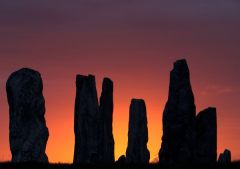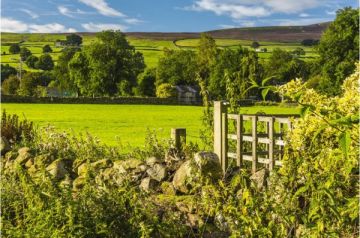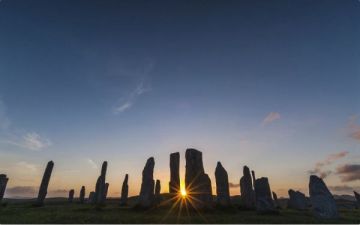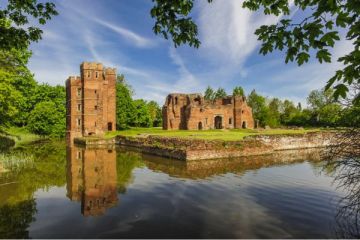
The semi-nomadic existence of Mesolithic Scots gradually gave way to a more settled lifestyle in the Neolithic, or New Stone Age period. During this time regular settlements were established. Settlers cleared forested areas to make room for permanent villages and began to sew crops rather than relying on hunting for food.
The earliest known Neolithic settlements date to around 4,000 BCE. Like the early Mesolithic nomads, the Neolithic peoples kept primarily to coastal areas. Some of these earlies settlements have been lost as the sea level rose over subsequent centuries.
Neolithic Housing
Neolithic houses were mostly made of timber, yet the best examples are of stone. Why the apparent contradiction? It is simple, really; people used stone where wood was scarce. Thus, the best known Neolithic settlement, at Skara Brae, Orkney, is a village of round stone houses. But it would be a mistake to assume that all Neolithic houses were built like those at Skara Brae; these stone dwellings were probably the exception rather than the rule, and most houses would have been built of timber.
Tombs and Standing Stones
If remains of Neolithic houses are scarce, other reminders of Scottish Neolithic presence are not; burial mounds, cairns, chambered tombs, barrows, passage graves and other burial structures remain in abundance. Many of these structures have yielded grave goods when excavated, apparently interred as some form of religious observance, indicating a belief in an afterlife.
Five distinct types of chambered tomb have been identified, and are loosely classified according to their customary structure, rather than their geographic location. The five types of Neolithic tombs are the Clava, Bargrennan, Orkney, and Maes Howe passage grave, and the Clyde cairns, found mostly in Arran and Argyll.
Another type of stone structure usually associated with the Neolithic period are stone circles and standing stones (it should be pointed out that these type of stone structures were also used in the later Bronze Age, so just because there is a standing stone does not mean it was erected during the Neolithic period).
Scotland has a vast range of standing stones and stone circles. Among the most impressive are the Ring of Brodgar and Stones of Stenness on Orkney, and the amazing Callanish Stone Circle on Lewis. But apart from these sites there are also a multitude of smaller circles and individual stones, not to mention the recumbent style of stone circles found mainly in Aberdeenshire. Despite a myriad of theories, some requiring a leap of imagination, we don't really know why the stone circles and standing stones were erected, but they remain some of the most impressive and mysterious sites to visit in Scotland.


